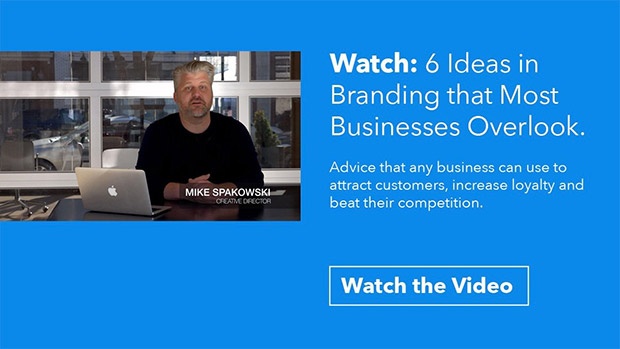Want to Build Brand Trust? Start With a Strong Brand Positioning Statement
Trust. It’s the very heart of marketing—and it’s the hardest thing to get right.
That might sound like a gross oversimplification, but it’s true. Particularly with the longer sales cycles so prevalent in business-to-business and professional services markets.
But how do you build this trust? And why do so many brands get it wrong?
The answers lie in the art and science of brand positioning.
What is brand positioning?
By some accounts, people have been using branding to differentiate their possessions or products for more than 4,000 years.
Originally, of course, farmers branded livestock to make the animals instantly identifiable as their own. By the 1500s, skilled workers were adding symbols or brands to their work as a form of signature.
As the Industrial Revolution heated up, more and more products were on the market, and this meant the need for further differentiation. Company logos became increasingly popular. The first logo was trademarked in 1876 for the Bass Brewery.
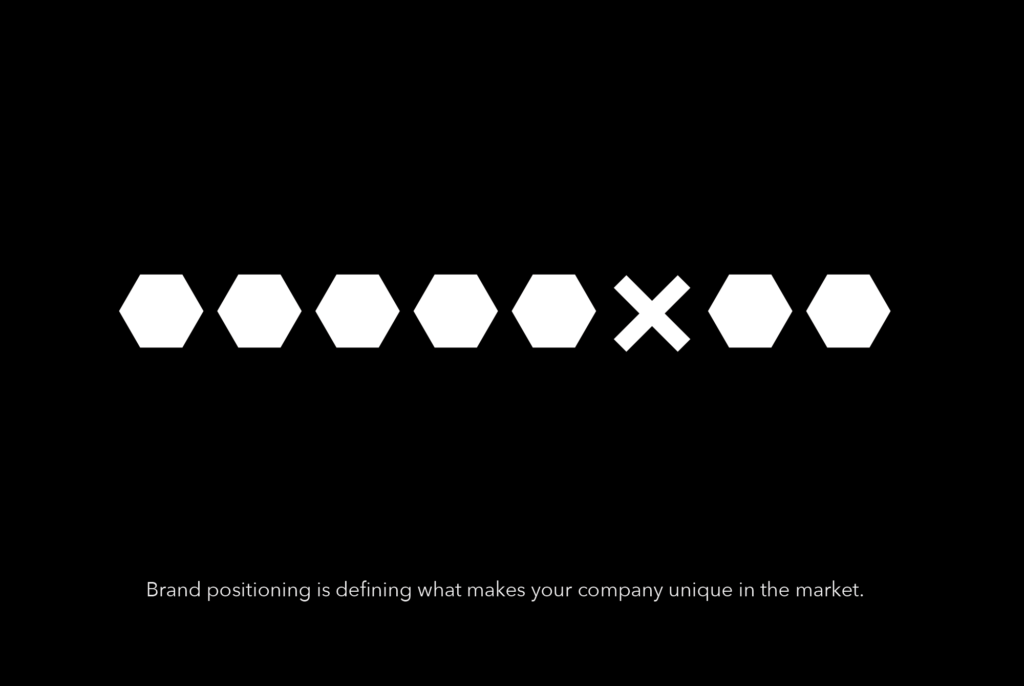
In today’s world, “branding” is about so much more than symbols or logos. Atomicdust’s branding program, for example, focuses on research and messaging, in addition to design, as the foundation of a branding platform.
But, in essence, the goal of branding today is as it has always been: to leave your mark, sometimes literally. To show ownership. To build trust.
Brand positioning takes it all a step further. Positioning is your chance to put a stake in the ground, and show (and tell) the world how you’re different.
Salespeople have used some form of “positioning” to carve out a competitive edge since the early days of commerce. But it took advertising pioneer Jack Trout to formalize the practice and bring the term “positioning” to the forefront.
His 1969 Advertising Age article is often credited for launching the era of brand positioning. Further, Trout’s 1981 book, Positioning: The Battle for Your Mind, penned with his business partner Al Reis, established positioning as a foundational element for brand growth and business success. (Find more great reads on our list of top branding and marketing audiobooks.)
Trout and Reis recognized the need for brands to stand out amidst an increasingly crowded media and product landscape. The notion of “media clutter” borders on cliché these days, but it makes the need for writing solid brand positioning statements an even more critical component of a successful marketing plan.
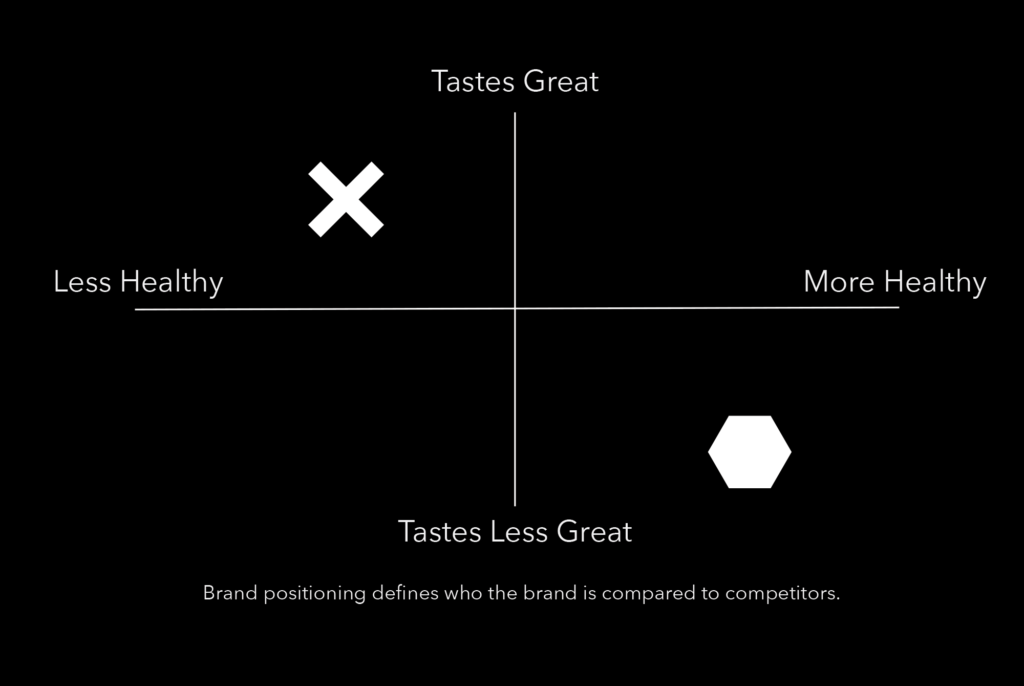
An example of a brand positioning chart
The right positioning statement will create a place in the minds, hearts (and hopefully wallets) of your most important target audiences. It lets your prospects know what you do. And builds trust that you’re uniquely qualified to deliver on the benefits you promise.
It’s also an internal unifier, an elevator pitch of sorts, for your employees.
It’s the best way to give your teams powerful, clear and unified language to describe the most important aspects of your company.
To put it more plainly, an effective positioning statement gives your employees something to rally around and sets the stage for your prospects and customers to trust that your firm is uniquely qualified to solve their problems.
The elements of a positioning statement
Let’s break this down even further. There are four basic elements of a brand’s positioning statement. And while this might look like a brand positioning statement template, consider it more like a list of ingredients than a specific recipe or formula.
Here are the core elements of a brand positioning statement:
- A declaration of your target market
- A description of your product and service offerings
- A claim of what makes you different
- A clear definition of the benefits (no more than two) that you deliver for your audience
If that sounds circular (starting and ending with your target market), it’s intentional, at least in our context today. After all, remembering your audience is one of the most important aspects of your positioning statement, and it’s also one of the biggest mistakes brands make when creating their foundational marketing language. But more on that later.
What brand positioning isn’t…
We’ve outlined the basic components of your positioning statement. But how do you go further? If you hop on your favorite search engine and look for “positioning statement examples,” it’s easy to get confused. The term “brand statement” or “brand positioning” statement can bring up a number of articles and examples that are not about true brand positioning statements.
Once again, to write a brand positioning statement is to set the tone for your brand. It is the foundation for everything… but there are a few things it clearly is not.
First up, a positioning statement generally is not for public consumption. It forms the foundation for everything people will see and hear from a brand. It’s internal language to unite employees and inform everything the company says and does.
It’s also not your mission or vision statement. These are designed to be big, aspirational statements to communicate your main purpose. A bold mission statement gives meaning to what you do. It’s your “why.” A brand positioning statement, on the other hand, translates this lofty language into something more concrete. It’s your “what.”
A brand position is not the value proposition or brand promise, although you can view your positioning statement as a way to define how you deliver on statements like your brand promise.
It’s not your brand story or narrative. It’s a stage-setter for these things. A solid positioning statement should be more grounded, specific and measurable than sometimes-lofty stories about your brand.
Further, your positioning statement is not your tagline. Again, while your tagline may borrow elements of your positioning, it’s not the whole thing.
Most of all, brand positioning statements are never a solo affair. They should never be crafted exclusively by the marketing department or executive team, or even an outside agency flying blind. The best positioning work is a collaborative affair, considering voices from all levels and roles.
Here’s one huge takeaway from this discussion: Your brand positioning statement is just one piece of the much bigger branding puzzle. To mix metaphors, it’s an important step in a long journey.
Let’s explore how to avoid some of the common missteps along the way.
Tips for crafting a successful brand statement
Research, research, research. It’s so important, we said it thrice. Talk to your internal teams. Talk to your target customers. Look at other brands, inside your industry and out. Gain an outside perspective. To put it another way: never do brand research in a vacuum.

Examples of audience personas that can be used to inform your brand positioning statement
Remember your audience. Your brand isn’t about you. It’s about your customers, clients and prospects and, more importantly, how you solve their pain points. What are they looking for? What words do they use to describe their challenges and common solutions? Use those words to align your statement with your customer experience.
Be succinct. Keep it short and to the point. Some of the best brand statements are a single sentence. Use the words your customers use, but avoid jargon where you can. Write it, read it and then cut some words. Share it with someone who knows the target audience, and then cut some more based on their advice.
Consider the competition. The only way to be different from your competition is to know how they’re positioning themselves. Look at your competitors’ marketing efforts from your customers’ perspective, and craft a story that sets you apart. Try not to color your research based on what you know of your competitors because your prospects won’t have this inside information.
Think benefits. It’s easy to focus on the features of your product or service, but these bullet points are also easy for your competitors to copy. But they can’t copy the value you bring, because that’s where the real difference lies.
Be specific. Avoid broad, sweeping promises: this is the time to put a stake in the ground. Own the space in the market you’ve worked so hard to claim because that’s the very essence of brand positioning.
Never stand still. Your market is always changing. Your customers’ preferences are always shifting. So it’s important to stay ahead of the trends. Keep in tune with the positioning process so you can make adjustments and ensure your key messages continue to resonate and build trust with your most important audiences.
What does trust have to do with marketing, anyway?
Here in the era of positioning, and even more recently, in the age of content marketing, every connection with your target audience is a chance to build trust and, in turn, to use that trust to build a strong, long-lasting customer relationship.
It starts with setting expectations and boundaries, right from the beginning. It starts with letting your prospects know who you are and what you stand for. It starts with a single, defining statement of how your brand can deliver.
Glen Urban of the Massachusetts Institute of Technology (MIT) – Sloan School of Management theorized in his 2003 paper that building this trust is the new imperative for reaching customers. Customers have access to more information than ever, and they’re skeptical of a lot of it. The old ways of making assumptions about audiences and pushing a multitude of messages to see what sticks may not be as effective anymore.
As Urban states in his research, one of the keys is “realigning to the customer’s side.” That is, seeing everything from the customers’ perspective, and building everything—from your products to your brand messaging—in that context.
When you put your customers and prospects at the center of your strategic messaging, amazing things happen. Your customers see themselves in your solutions. They can envision the better world your products can help them create. And when they decide to work with you, they’ll feel like the decision was their own, not one you forced them into making.
In short, they’ll trust you.
Effective brand positioning statement examples
Here at Atomicdust, we use brand positioning statements exactly as described above: to help our clients define what they do and for whom, and to communicate what benefits they deliver. We call these our “Clarifying and Reassurance” statements.
Let’s take a look at two examples to help you start writing your own.
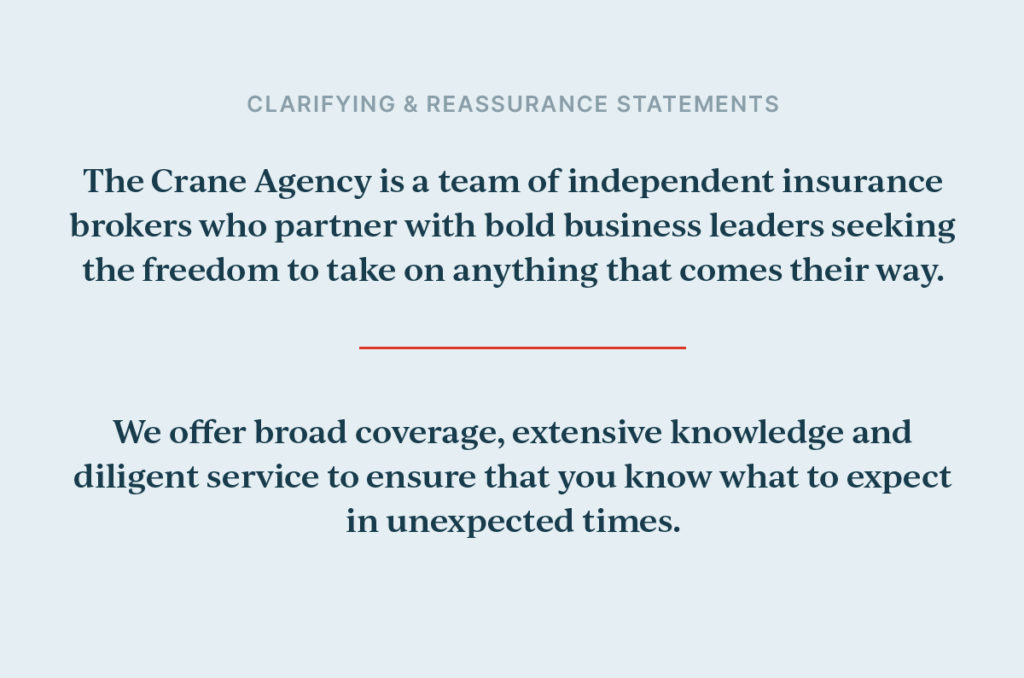
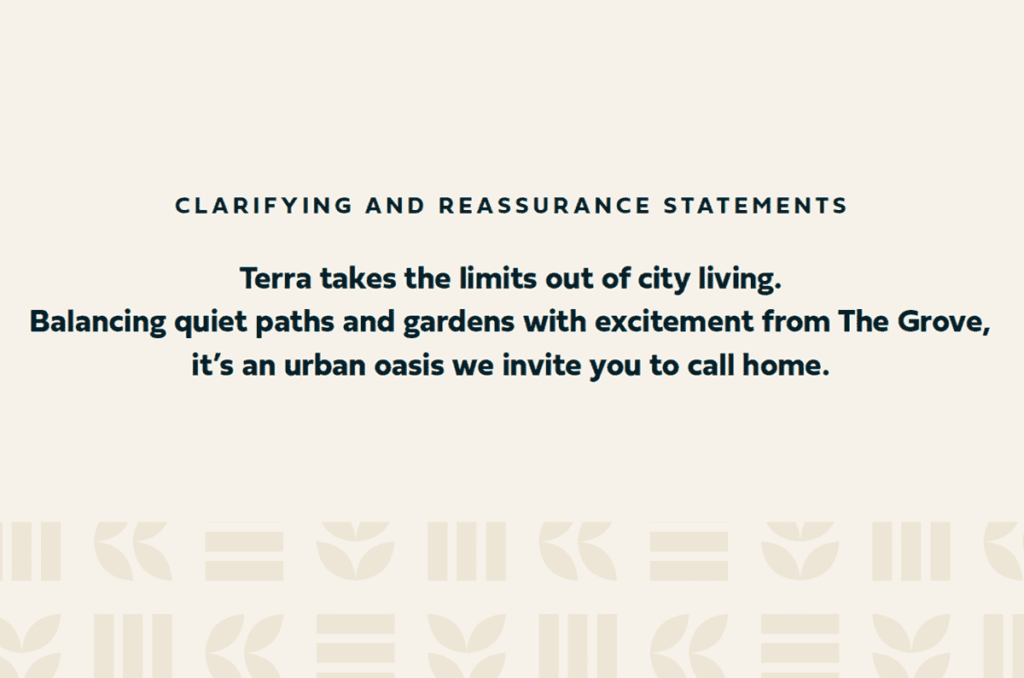
And one more, from our recent brand refresh for True Media:
True Media is an independent media agency helping leading and emerging brands across North America build stronger connections with customers. We work closely with our clients to apply deep media expertise and genuine human perspective that enable them to find what’s true and elevate their brands.
In this example, you can see how True Media brings its core differentiators to the forefront by focusing on the issues that matter to its customers.
We’re not making empty promises like, “We’re the best media company,” or making claims that anyone else can, too, like, “Our brokers care about your success.”
Our branding program helped these companies discover how they’re different, and we put their differentiators into a sentiment that matters to their customers. That’s the foundation of a long-term, trusting (and hopefully profitable) customer relationship.

